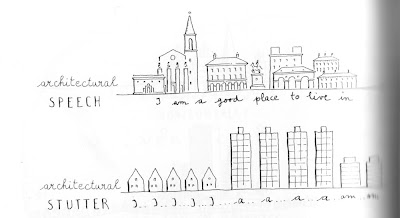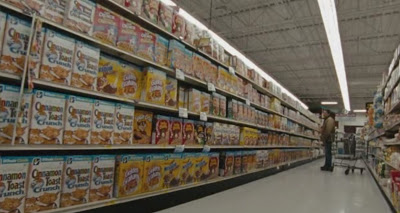Perhaps, choice is the preferred word than variety, because they are different but the choice is irrelevant. Housing choice is for the most part is the equivalent of cocoa puffs and fruity pebbles…all made of the same crap underneath: corn starch, artificial coloring, flavoring, and some bran flour. Flip the formula around a little bit and you get a two-car garage, a pool, and a third half-bathroom.
A house should always be first thought of as a home. It is first shelter, then a place of comfort. Unless you happen to catch a bubble at the right time, which is difficult especially when the power of positive thinking irrational exuberance kicks in housing, thinking of it as an investment is typically not a good idea. Despite what conventional wisdom might tell you. Conventional wisdom has a short memory…and it is often manipulated by the National Ass. of Realtors.
Housing costs are always pegged to income. There is always x amount of people in the world, y amount of housing units, and z amount of money. All of which are interrelated. When you start adding distance between housing and jobs, markets, etc you start raising the cost of that housing in an externalized fashion because of the energy exerted traversing those distances, over and over and over.
The noughties saw rising home values and falling incomes as we leveraged ourselves to the hilt. Cities will be contracting in the “great reset” of the unnecessary complexity that was once considered “modernity.” The brand new house you just bought out in BFE, that you thought was a great value, could very well have as much value in twenty years as the nutritional value from those honey smacks.
It really was a steal…from you…and all of the taxpayers supporting the infrastructural costs that were externalized (onto you) perpetuating what you thought the American dream is.
In fact, the only way for housing to be “sustainable” or a valuable investment beyond a shelter is for one generation to pass it on to another free and clear allowing them to focus money and energy on other pursuits, like bettering themselves. THAT is the American dream. And for that to happen that home has to be in a location as well as designed and constructed in a way that is suitable (or at least adaptable) to those future generations.
The problem is that so many of the houses built in the last twenty years have a shelf life no longer than twenty more years under the ruse of the NAR that is their simulated version of the “American Dream.” Considering that suburban housing really didn’t become prevalent until the Serviceman’s Readjustment Act for returning soldiers in 1944 and the National Highway Investment act of 1956 did suburban housing really explode, building off of the various Levittowns and
Americanized Garden Cities. Somehow I think the American Revolution, the Civil War, and either World War were fought for suburbia.
Point is, that if the American Dream is older than suburbia, how can suburbia be the definition of what the American Dream is? The short answer is that it, of course, is not.
Many of the negative comments in the various media outlets that have recently begun to pick up articles from this here blog, typically all come from the same angle: that in some way I’m trying to
force them to live the way that I do when I’m merely offering the eulogy for the trivial things that they apparently hold so dear. What this is called, is
transference. These are people that want everybody to live their way, where I’m suggesting that choice is necessary.
I blog here because I am showing how difficult (yet possible) it is to live the way of my choice. I blog because of the antiquated zoning regulations, highway funding, and state and federal street standards that force a suburbanized way of life and mandated car ownership onto all of its citizens. As
Chris Leinberger has shown, the facts support me.
Suburbia offered an escape from the poverty, despair, and particularly the pollution and soot of industrialized cities. Highways were built as a conduit for people in and out of cities under the illusion that your own house and car were symbols of prosperity. Furthermore, highways became a centripetal force themselves – scattering people across the countryside into was is the anti-city.
 Sketch by Leon Krier
Sketch by Leon KrierThe illusion of choice in the market dictating a suburban world is as innaccurate as the misunderstanding of the American dream, and libertarianism for that matter. The cities we’ve constructed has created a homogenous world that forces elderly and children to be at the mercy of the car, whereas in more walkable communities all are empowered.
My interpretation of the American Dream is one of opportunity. Opportunity requires choice, as does a functioning market economy. The housing market has and will continue to fail as long as we build housing as “product,” not livable, walkable places. Livable, walkable places allow for all to participate in community and the economy.

The tool typically used to show a greater range in housing choice is the
transect. As I’ve crudely shown on the diagram above, the blue dotted line represents a rough estimation of housing supply. I’ve often written about
Valencia, Spain as it is constructed in a way that is transferrable from one generation to another, thereby instilling value for future generations. We on the other hand will be completely reconstructing and reorganizing our cities.
A quick tour to show the transect as it fully built out well before the idea was even codified (or given name for that matter) as it emerged by creating variety, only allowed by a robust and flexible transportation network.

Nearby agriculture.

Want to live in a mansion? If you can afford it, they’re back there.

Small lot, single-family housing.

Attached housing.

Multi-family.

Want more action, try the City Center.
Except, this isn’t Valencia. HaHA! I pulled a fast one like I was a realtor.
This is actually a suburb of Valencia called Torrent, which is home to 78,000 people. Below you can see it’s form with minimal highway intrusion. The urban core is near the metro station to the Northeast. The rest of the community extends to the Southwest as density diminishes. The industrial area is the peninsula like form between a waterway and the highway to the North. In other similar suburban Valencia communities, the railroad is usually the demarcating line between the living area and the industrial zone, station serving as the dissemination point for goods and people.

Below is the same 78,000 person community applied at the same scale to Downtown Dallas, if to only show how efficiently the land is used, while providing all of the housing choices shown above, and designed in a people-friendly manner.

The gray represents the industrial zone, what is typically known in the states as LULUs, or locally undesireable land use. Ya know, much like freeways are, except these are even designed for people:

And one going away shot of one of the central squares. Notice the divided bike lane:

In order to survive, our suburban municipalities, are going to have to prove their worth for future generations. Nearly all will be unable to continue functioning solely as bedroom communities and will have to look to places like Torrent for how to redesign their communities; to densify, to be usable, functional, productive, and livable in the 21st century.
If our economy is to get off the ground again, we must focus efforts on the provision of choice, in transportation, housing, and places. A polychromatic variety of experiences and densities (designed livably) creates for, in essence, competition, thus allowing for positive feedback and better, more productive places.
All “stimulus” efforts should be focused on building livable (and walkable) cities allowing for choice in housing and transportation, not only for the few, but for all. Choice, it is the foundation of the American Dream and a prosperous economy.



















